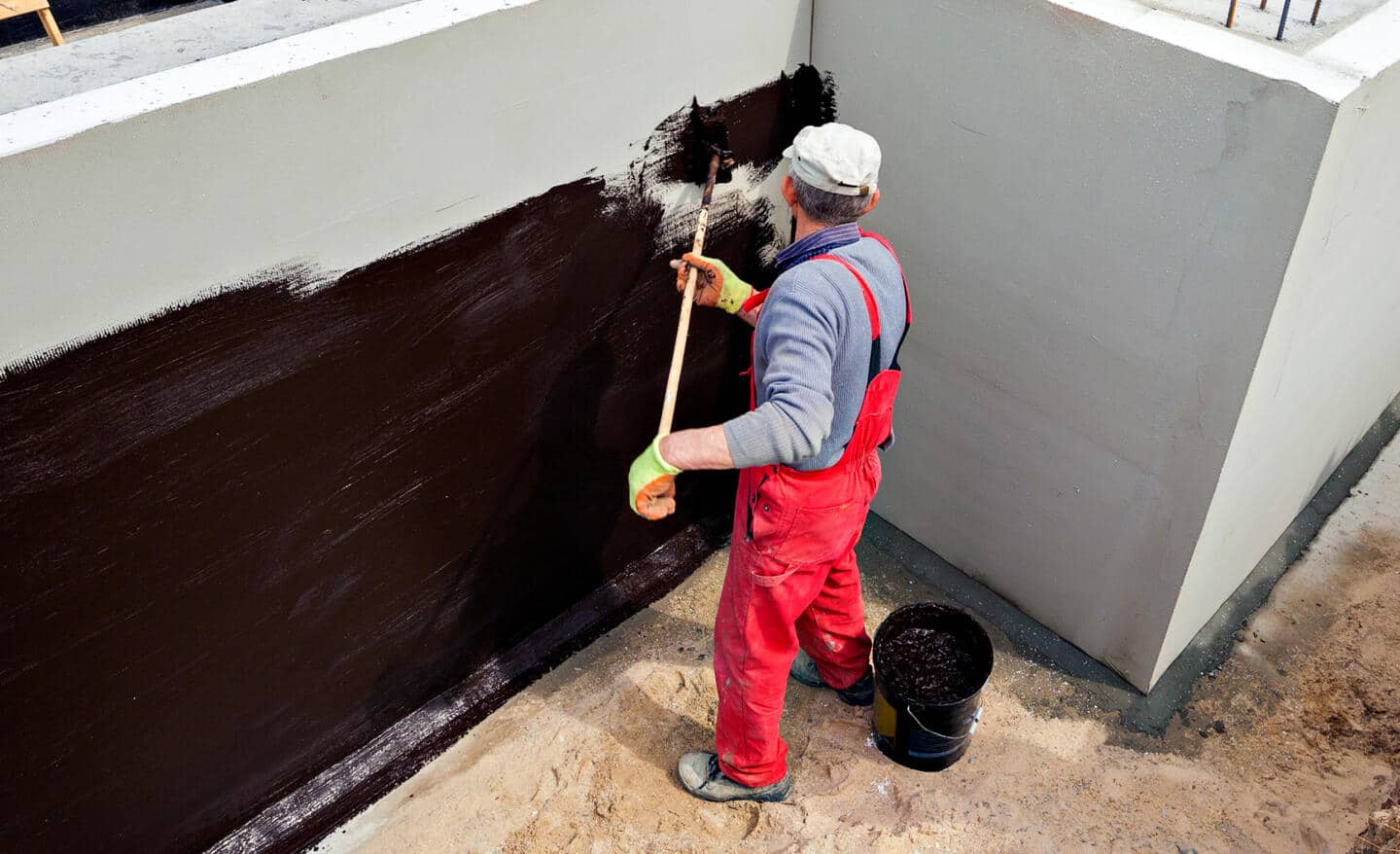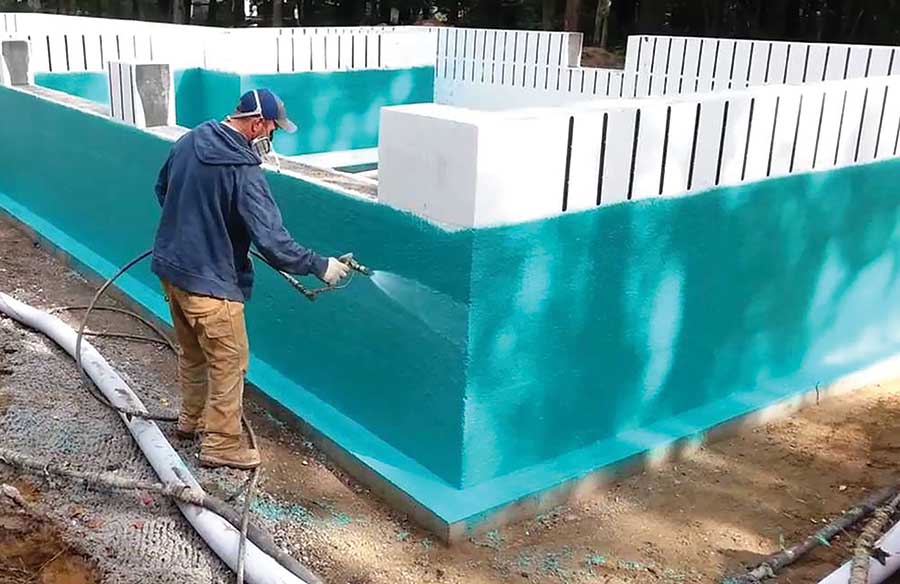Just How Waterproofing Functions: A Thorough Take A Look At Methods and Technologies
Waterproofing is vital for protecting frameworks from moisture-related damages. It involves various techniques and technologies that create barriers versus water invasion. Conventional techniques, such as compressed clay, exist side-by-side with modern advancements like liquid-applied membrane layers. Recognizing the subtleties of these techniques is essential for reliable application. The performance of any waterproofing service pivots not just on the techniques used but likewise on ongoing upkeep and evaluation. What are the crucial aspects that affect lasting efficiency?
Recognizing the Fundamentals of Waterproofing
Waterproofing is a vital procedure that shields structures from water breach, which can cause significant damage over time. This method involves the application of numerous materials and strategies designed to produce a barrier against moisture. The key goal is to stop water from penetrating surfaces, which can cause damage, mold development, and structural instability.Various elements influence the choice of waterproofing method, consisting of the sort of structure, its area, and environmental problems. Comprehending the physics of water motion and the buildings of various materials is vital in choosing a reliable waterproofing solution.Effective waterproofing not just safeguards buildings but also enhances their long life and stability. Normally, it is incorporated right into the layout phase of building and construction to ensure detailed protection. As understanding of water-related issues expands, the significance of recognizing waterproofing fundamentals becomes progressively clear to architects, builders, and home owners alike.
Traditional Waterproofing Methods
Standard waterproofing techniques have been used for centuries, relying on reliable strategies and products to safeguard structures from water damages. Among the earliest methods entails the use of clay, which, when compacted, creates a natural barrier versus wetness. In addition, asphalt, a sticky, black product stemmed from petroleum, has actually been utilized for its waterproof properties, usually applied to roofing systems and foundations.Another strategy includes the application of lime-based plasters, which offer a breathable layer that allows moisture to leave while avoiding water ingress. Thatch roofing, a typical technique still seen in some societies, offers exceptional waterproofing as a result of its firmly packed straw layers.Moreover, making use of rock and brick has projected, as these products are inherently resistant to water when effectively mounted. Generally, conventional waterproofing approaches highlight the relevance of selecting ideal products and building techniques to boost toughness against water breach.
Modern Waterproofing Technologies
Developments in contemporary waterproofing innovations have actually transformed the means structures are secured from water damage. Ingenious techniques such as liquid-applied membrane layers and innovative sealers have actually enhanced the efficiency and flexibility of waterproofing services. These technologies enable for smooth application, minimizing the danger of leaks and making certain detailed coverage over complicated surfaces.Moreover, the integration of smart technologies, such as wetness sensors and automated surveillance systems, enables real-time analysis of waterproofing performance. This aggressive method helps with timely maintenance and minimizes long-term repair work costs.Additionally, developments in spray-applied coverings offer fast application and excellent bond, adjusting to numerous substrates while providing robust security. Techniques like polymer-modified systems additionally enhance flexibility and longevity, making them ideal for varied environments. On the whole, modern-day waterproofing modern technologies not just minimize water invasion but likewise add to the long life and sustainability of structures, marking a considerable shift in the sector.
Materials Utilized in Waterproofing
The performance of waterproofing services heavily depends on the products utilized in their application. Various materials are used to create obstacles versus water ingress, each with special homes fit for various environments. Typically utilized materials include membrane layers, coatings, and sealants.Liquid-applied membranes, usually made from polyurethane or acrylic, develop a seamless obstacle that adapts to complex surface areas. Sheet membrane layers, normally created from rubber or thermoplastic, deal durability and are optimal for bigger locations. Furthermore, cementitious waterproofing products, made up of cementitious compounds, supply excellent attachment and flexibility.Sealants made from silicone or polyurethane are vital for joints and joints, guaranteeing thorough protection. Additionally, advanced products, such as geo-composite membrane layers, incorporate numerous features, enhancing efficiency. In general, the choice of waterproofing products is important in achieving resilient and effective water resistance, customized to certain project demands and environmental conditions.
Typical Applications of Waterproofing
Waterproofing plays a necessary function in different industries, making sure the longevity and stability of structures. Usual applications consist of property solutions that shield homes, industrial facilities that safeguards services, and industrial settings that require robust security versus moisture. Recognizing these applications highlights the significance of waterproofing in maintaining both security and functionality across different atmospheres.
Residential Waterproofing Solutions
Several property owners face challenges with moisture intrusion, making efficient domestic waterproofing services crucial. Numerous approaches exist to address epdm waterproofing this problem, including inside and outside waterproofing systems. Interior services often entail the application of sealants and coverings to basement wall surfaces, which aid prevent water seepage. Exterior approaches usually include the installment of water drainage systems and water-proof membrane layers that divert water far from the foundation.Additionally, house owners may consider sump pumps to get rid of water buildup and dehumidifiers to control humidity degrees. Correct grading and the use of rain gutters also play an essential function in taking care of water flow around the home. By executing these methods, property owners can greatly lower the threat of water damages and mold development, making certain a dry and risk-free living setting.

Industrial Framework Security
Reliable waterproofing solutions play a critical duty in the defense of commercial framework. Sump pump discharge drainage Omaha. These methods are important for safeguarding structures, parking frameworks, and bridges from water damage, which can endanger structural integrity and cause pricey repair services. Typical applications consist of the setup of membrane layers, coatings, and sealants that create barriers versus moisture infiltration. Locations such as cellars, roofing systems, and exterior walls are typically focused on to ensure longevity and resilience. Furthermore, waterproofing systems can enhance power efficiency by preventing water-related issues that may bring about mold and mildew development and deterioration. By implementing robust waterproofing steps, residential property proprietors can safeguard their investments and preserve operational performance, eventually adding to the total sustainability of industrial centers
Industrial Applications Summary
While numerous industries face unique obstacles, the need for reliable waterproofing solutions stays a continuous in industrial applications. Industries such as production, building, and power frequently come across atmospheres where waterproof floor coating moisture direct exposure can jeopardize structural stability and operational performance. In manufacturing facilities, waterproofing is crucial for safeguarding machinery and products from water damage. In construction, it safeguards structures and cellars versus groundwater seepage. The power industry relies on waterproofing for the security of devices in hydroelectric plants and offshore structures. Additionally, food processing markets make use of waterproofing to assure hygiene and compliance with safety requirements. Overall, reliable waterproofing remedies are vital for boosting resilience, security, and productivity throughout various industrial setups.
Maintenance and Longevity of Waterproofing Solutions
Waterproofing services are created to supply long-term security against wetness breach, regular maintenance is necessary to ensure their efficiency and durability. Routine examinations play a substantial duty in recognizing potential problems such as cracks, peeling, or signs of water damage. Addressing these problems promptly can protect against more damage and costly repairs.Additionally, cleaning the surface area of waterproofed locations aids eliminate dirt and particles that can compromise the stability discover here of the waterproofing barrier. It's additionally recommended to reapply safety coverings or sealants as advised by suppliers to maintain perfect efficiency. Ecological aspects, such as UV direct exposure and extreme weather, can influence the lifespan of waterproofing products, making normal assessment essential
Frequently Asked Concerns
Can Waterproofing Be Applied in Winter?
The question of applying waterproofing in winter raises issues concerning adhesion and healing. Numerous items might not execute at their finest in low temperatures, necessitating mindful option and factor to consider of details standards for efficient application.
How Long Does Waterproofing Generally Last?
The period of waterproofing performance differs based upon materials and ecological elements. Typically, it can last from five to 10 years, but normal upkeep and evaluations are vital to ensure peak performance and long life.
Is DIY Waterproofing Effective and Safe?
The efficiency and safety and security of do it yourself waterproofing rely on various aspects, including worldly top quality and application method. While some people accomplish satisfying results, others might experience concerns that endanger long-term security and structural stability.
What Are the Signs of Failing Waterproofing?
Indicators of failing waterproofing include visible water spots, peeling paint, mold growth, musty odors, and wetness in wall surfaces or ceilings - Basement waterproofing Omaha. These indicators recommend jeopardized obstacles, demanding timely evaluation and potential remediation to stop additional damage
How Do I Pick the Right Waterproofing Specialist?
